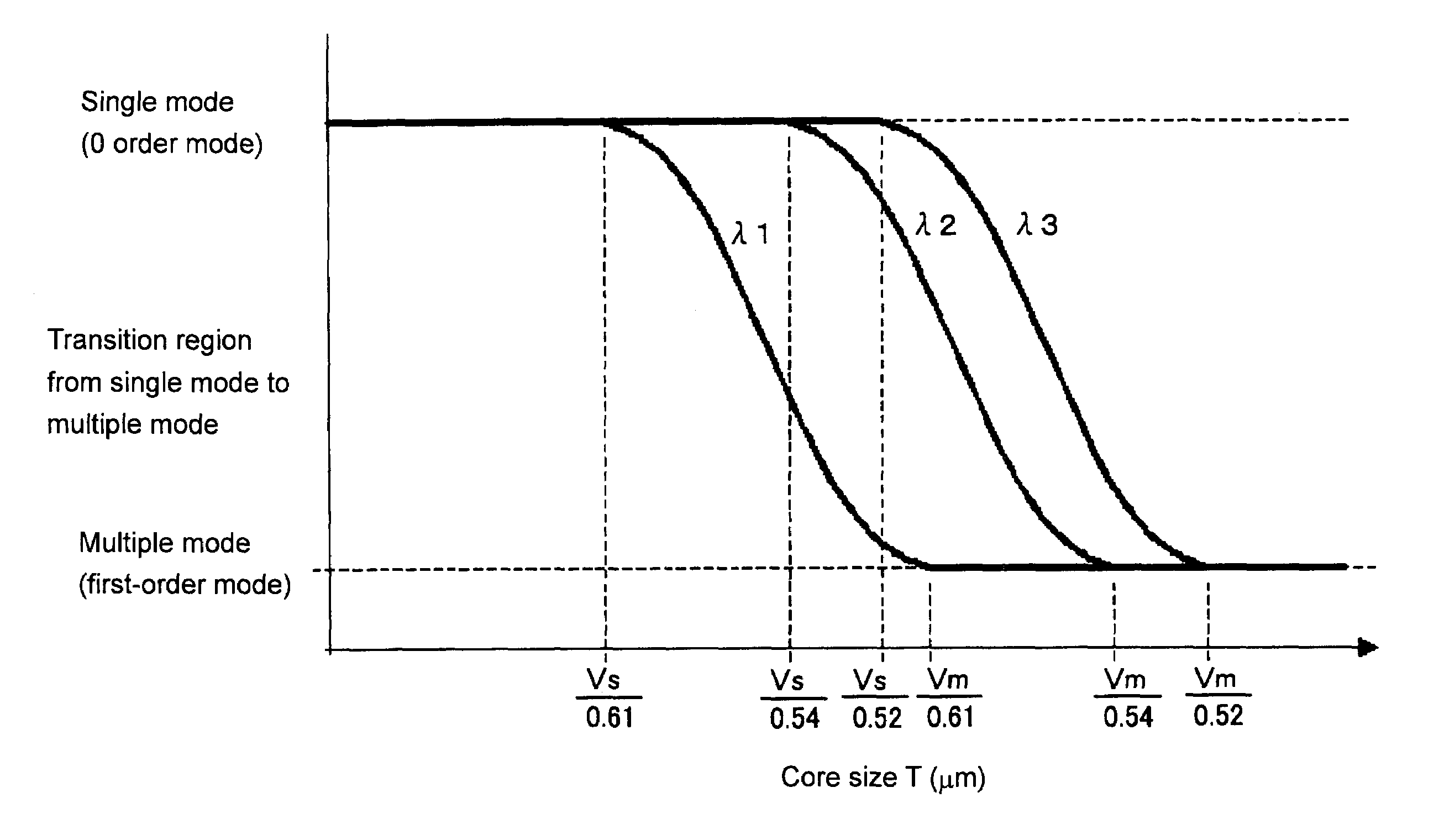Optical multiplexer/demultiplexer
a multi-multi-plexer and optical technology, applied in the field of optical multi-plexers/demultiplexers, can solve the problems of reducing communication quality in some cases, abrupt variation in loss, and affecting the quality of communication, so as to reduce noise or stray light
- Summary
- Abstract
- Description
- Claims
- Application Information
AI Technical Summary
Benefits of technology
Problems solved by technology
Method used
Image
Examples
first embodiment
(First Embodiment)
[0037]FIG. 4 shows a perspective view of an optical multiplexer / demultiplexer 11 according to a first embodiment of the present invention. In addition, FIG. 5 shows a sectional view of the optical multiplexer / demultiplexer 11 in FIG. 4 taken along optical fibers 17c and 17a and cores 13c and 13a. In the optical multiplexer / demultiplexer 11, an optical waveguide 14 and a filter element 15 are provided on an upper surface of a silicon substrate 18. In FIG. 4, the single-mode optical fibers 17a, 17b and 17c at use wavelength are connected to end faces of the cores 13a , 13b and 13c, respectively.
[0038]In the optical waveguide 14 constituting a main part of the optical multiplexer / demultiplexer 11, the cores 13a, 13b and 13c are buried in clads 12 made of a transparent plastic material or glass. The clad 12 comprises an upper clad 12a and a lower clad 12b which are overlapped with each other, and the cores 13a, 13b and 13c are sandwiched between the upper clad 12a and ...
second embodiment
(Second Embodiment)
[0066]FIG. 15 shows a perspective view of an optical multiplexer / demultiplexer 28 (WDM coupler) according to a second embodiment of the present invention. The optical multiplexer / demultiplexer 28 has a structure in which the third core 13c in the optical waveguide 14 in the optical multiplexer / demultiplexer 11 according to the first embodiment is removed. That is, according to the optical multiplexer / demultiplexer 28, a first core 13a and a second core 13b are buried in a clad 12, end faces of the cores 13a and 13b are exposed at both end faces of the clad 12, and the first and second cores 3a and 3b are connected in approximate V-shape at one end of the clad 12. A filter element 15 is provided at the end face of the clad 12 where the cores 13a and 13b are connected in the approximate V-shape, and the end faces of the first and second cores 13a and 13b are opposed to the filter element 15.
[0067]Optical fiber blocks 29 and 30 are connected to both ends of the optic...
third embodiment
(Third Embodiment)
[0072]FIG. 17 shows an optical multiplexer / demultiplexer 32 comprising a four-branching coupler according to a third embodiment of the present invention. According to the optical multiplexer / demultiplexer 32, a first core 13a and a second core 13b which are buried in a clad 12 are connected in approximate V-shape at one end of the clad 12. The core 13a branches off in two cores 13d and 13e, the core 13d branches off in two cores 13f and 13g, and the core 13e branches off in two cores 13h and 13i. In addition, a filter element 15 is bonded to the end face of the clad 12 on which the cores 13a and the core 13b are connected.
[0073]Although it is not shown, optical fiber blocks are connected to both ends of an optical waveguide 14, respectively. The optical fiber block connected to the side of the filter element 15 comprises an optical fiber 17c which is optically connected to the core 13a through the filter element 15. In addition, the optical fiber block connected to...
PUM
 Login to View More
Login to View More Abstract
Description
Claims
Application Information
 Login to View More
Login to View More - R&D
- Intellectual Property
- Life Sciences
- Materials
- Tech Scout
- Unparalleled Data Quality
- Higher Quality Content
- 60% Fewer Hallucinations
Browse by: Latest US Patents, China's latest patents, Technical Efficacy Thesaurus, Application Domain, Technology Topic, Popular Technical Reports.
© 2025 PatSnap. All rights reserved.Legal|Privacy policy|Modern Slavery Act Transparency Statement|Sitemap|About US| Contact US: help@patsnap.com



